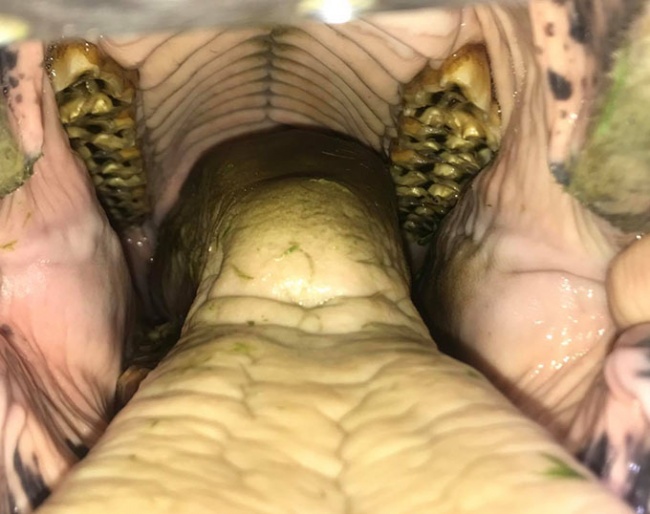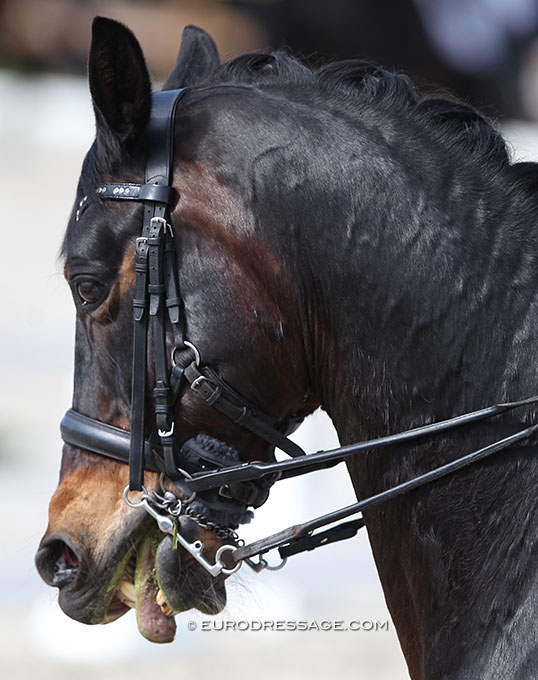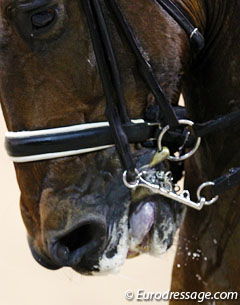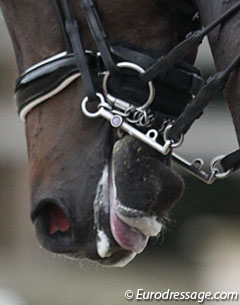
-- by Vikki Fowler, Veterinary equine dentist
After my recent post regarding fitting a bit to the individual horses mouth, it has become clear that horse riders don’t understand the horse’s tongue. At all. The horse’s tongue is the key to everything. It can tell you what a horse is feeling and thinking, it can tell you how true a horse’s carriage is or can reveal tension that is limiting their performance.
The Tongue Connects Back to the Hind Legs
The horse’s tongue is a huge bunch of muscle, like way bigger than you think. The last tooth is about level with the horse’s eye, and the tongue goes even further back than that. Just behind the bit, the tongue doubles in height to completely fill the mouth. The tongue connects, via a long line of interconnected muscles, all the way back to the hind legs. What happens with the horse’s tongue DIRECTLY affects the horse’s ability to use his hind legs.
Yet many many riders consider the tongue a nuisance and tie it away. Using drop nosebands, flashes, grackles, micklems, “anatomical” nosebands, cranks etc. Some use spoon bits (remember the tongue doubles in height behind the bit), while others actually tie the tongue down! You are missing a vital source of information that the horse is eager to give!

When the tongue is pulled back, it causes tension all the way down the neck, along the back and into the hind legs. If the tongue is over the bit, the bit lies directly on the bars. The bars are knife-edge-sharp bone with a very thin layer of gum over the top. When the bit directly contacts the bars it is extremely painful and horses will react very strongly, sometimes rearing or ditching the rider. This is not naughty behaviour, it is pain. The horse is creating pain trying to avoid pain, they can’t win and they can’t vocalise this. No matter how hard they try.
Tongue Tension

There is a reason why having the tongue out is seen as a bad thing in dressage, and it’s not because it’s bad manners. It’s because it highlights tension and poor training. The lazy solution seems to be, tie the mouth shut. Personally I believe all nosebands below the bit should be banned for dressage and 2 fingers should comfortably be placed under the bridge of the nose of a cavesson. That would sort the wheat from the chaff.
Check List

As a side note, the tongue is a symptom and not a problem in itself. Do not allow anyone to mess with your horse’s tongue. The trend of releasing the Hyoid apparatus using the tongue is not only dangerous but a load of rubbish. Do not fall for it.
Always remember, dentistry is basic care NOT a luxury.
-- Text by Vikki Fowler - Photos © Fowler - Astrid Appels
Related Links
Noseband Special: Part I: The History of the Noseband
Noseband Special: Part II: The Purpose of the Noseband
Noseband Special: Part III: Riders and Trainers on Their Choice in Noseband
Noseband Special: Part IV: The Thicker, the Wider, the Better?
On the Ignorance of Noseband Tightness and Vague FEI Noseband Rules
The Double Bridle: An Instrument of Understanding